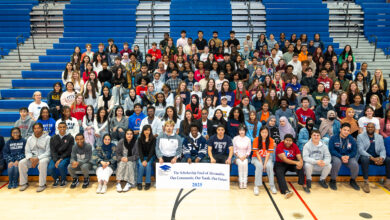T.C. Students Excel at State Marketing Competition
T.C. Williams High School marketing students recently competed at the 2015 DECA State Leadership Conference held in Virginia Beach. DECA is an international association of marketing students. Twenty-six marketing students earned the right to represent T.C. at the statewide conference. More than 3,500 students attended the DECA State Competition and T.C. Williams students competed in role plays and written events.
Seventeen T.C. students received individual medals or state trophies. The students who won medals are: Noah Taylor, Abby Nelson, Alex Eggleston, William Donohue, Julia Ruffino, Jackson Moser, James Bambara, Scott Passalugo, Surafel Adere, Destiny Williams and Miniya Shabazz.
Two teams of three T.C. students each were awarded trophies on stage as finalists in their events and will compete at DECA International Career Development Conference in Orlando Florida in late April. The first team is Razan Adam, Edom Tilahun and Jerry Wessen, who completed a marketing research and promotion project for the local business, Fairlington Pizza. The second team is Abby Hamilton, Reel Mustafa and Grant Chamberlain, who completed an Entrepreneurship Growth Plan for the business Patriot Portraits, co-founded by Abby.




